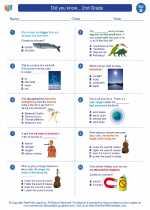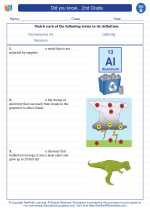Aluminum
Aluminum is a chemical element with the symbol Al and atomic number 13. It is a silvery-white, soft, nonmagnetic, ductile metal in the boron group. By mass, aluminum makes up about 8% of the Earth's crust, making it the third most abundant element after oxygen and silicon.
Properties of Aluminum
- Physical Properties: Aluminum is a lightweight metal with a density lower than that of other common metals, such as iron, copper, and brass. It has a low melting point and is malleable, making it easy to work with.
- Chemical Properties: Aluminum is highly reactive and can react with oxygen to form aluminum oxide, which gives it a protective layer against corrosion. It also reacts with acids, releasing hydrogen gas.
Uses of Aluminum
Aluminum is a versatile metal with a wide range of applications, including:
- Transportation: Used in the construction of cars, airplanes, and other vehicles due to its lightweight nature.
- Packaging: Widely used in the packaging industry for cans, foils, and other food and beverage containers.
- Construction: Utilized in the construction of buildings and infrastructure due to its strength and corrosion resistance.
- Electrical Transmission: Used in power lines and electrical wiring due to its conductivity and low cost.
Study Guide
Here are some key points to remember when studying the topic of aluminum:
- What is the chemical symbol and atomic number of aluminum?
- What are the physical properties of aluminum?
- How does aluminum react with oxygen and acids?
- What are some common uses of aluminum?
- What makes aluminum a suitable material for transportation and construction?
◂Science Worksheets and Study Guides Second Grade. Did you know... 2nd Grade
Study Guide Did you know... 2nd Grade
Did you know... 2nd Grade  Worksheet/Answer key
Worksheet/Answer key Did you know... 2nd Grade
Did you know... 2nd Grade  Worksheet/Answer key
Worksheet/Answer key Did you know... 2nd Grade
Did you know... 2nd Grade  Worksheet/Answer key
Worksheet/Answer key Did you know... 2nd Grade
Did you know... 2nd Grade  Vocabulary/Answer key
Vocabulary/Answer key Did you know... 2nd Grade
Did you know... 2nd Grade 

 Worksheet/Answer key
Worksheet/Answer key
 Worksheet/Answer key
Worksheet/Answer key
 Worksheet/Answer key
Worksheet/Answer key
 Vocabulary/Answer key
Vocabulary/Answer key

The resources above cover the following skills:
Earth Systems Science
Weather and the changing seasons impact the environment and organisms such as humans, plants, and other animals. Students can:
Analyze ways in which severe weather contributes to catastrophic events such as floods and forest fires